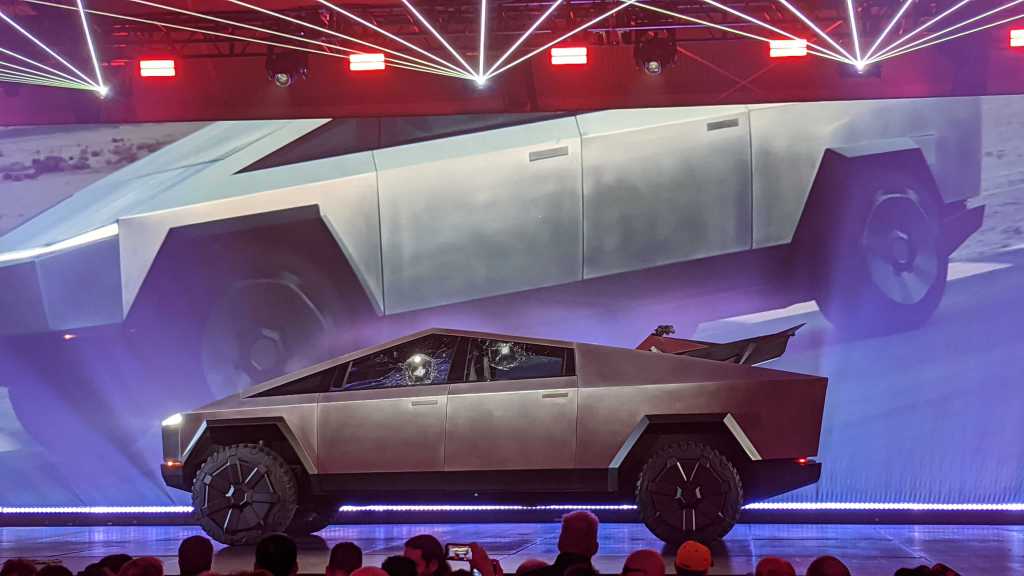Tesla officials visited two sites in Tulsa, Oklahoma this week to search for a location for its future and fifth gigafactory that will produce its all-electric Cybertruck and Model Y crossover, a source familiar with the situation told TechCrunch.
Company representatives also visited Austin. A final decision has not been made, but Austin and Tulsa are among the finalists, according to multiple sources. The AP also reported Tulsa and Austin as top picks for the gigafactory.
Tesla expects to make a decision as soon as next month, and “certainly within three months,” CEO Elon Musk said April 29 during the company’s first quarter earnings call.
Musk tweeted in March that Tesla was scouting locations for a so-called “Cybertruck Gigafactory.” Musk said, at the time, that the factory would be located in the central part of the U.S. and would be used to produce Model Y crossovers for the East Coast market as well as the cybertruck.
Not long after the tweets, TechCrunch learned that Tesla was eyeing Nashville and had been in talks with officials there. Tesla informed Nashville officials this week that the city is out of the running for its gigafactory location, according to one source.
An email was sent to Tesla requesting comment. The article will be updated if Tesla responds.
Tulsa Mayor G.T. Bynum’s office issued a statement neither confirms nor denies the talks.
Join us at TechCrunch Sessions: AI
Secure your spot for our leading AI industry event with speakers from OpenAI, Anthropic, and Cohere. For a limited time, tickets are just $292 for an entire day of expert talks, workshops, and potent networking.
Exhibit at TechCrunch Sessions: AI
Secure your spot at TC Sessions: AI and show 1,200+ decision-makers what you’ve built — without the big spend. Available through May 9 or while tables last.
“While I can not comment on potential projects, it is clear that Tesla and Tulsa were forged in the same spirit,” Bynum said in an emailed statement. “Both founded by pioneers who dreamt big and made it happen. Both trying to change the world with a new kind of energy. Both investing big in what matters most: people. Tulsa is a city that doesn’t stifle entrepreneurs – we revere them. And as Tesla continues to rapidly change transportation all around the world, I can’t imagine a better place for them to further that important work than Green Country.”
This next gigafactory, wherever it is located, will likely be larger and produce multiple products, CFO Zachary Kirkhorn said during the same April 29 call.
“That’s under a belief that there’s significant efficiencies by having as much as possible and similar product lines under the same roof and as much vertical integration as possible all in one facility,” Kirkhorn said.
Musk has referred to these as future plants as “tera” factories — a nod to terawatt, or more specifically a terawatt-hour of battery capacity. The company’s first “gigafactory” is in Sparks, Nevada. The massive structure, which has surpassed. 1.9 million square feet, is where Tesla produces battery packs and electric motors for its Model 3 vehicles. The company has a joint venture with Panasonic, which is making the lithium-ion cells.
Tesla dubbed the Sparks plant a “gigafactory” because the company said at the time it would be capable of producing 35 gigawatt-hours per year of battery cells.
Tesla assembles its Model S, Model X and Model 3 vehicles in Fremont, Calif. at a factory that was once home to GM and Toyota’s New United Motor Manufacturing Inc (NUMMI) operation. Tesla acquired the factory in 2010. The first Model S was produced at the factory in June 2012.
“Gigafactory 2” in Buffalo, New York, is where Tesla produces solar cells and modules. The company’s third gigafactory is located in Shanghai, China and started producing the Model 3 late last year. The first deliveries began in early January.
Tesla is now preparing to build another factory near Berlin. Once complete, this German factory will produce the Model 3 and Model Y for the European market.


